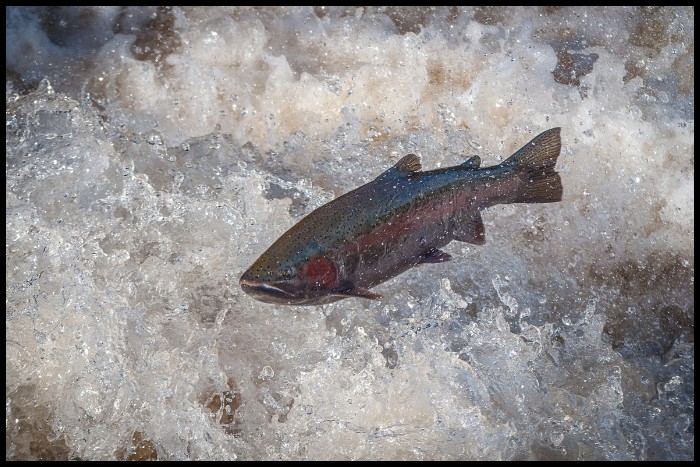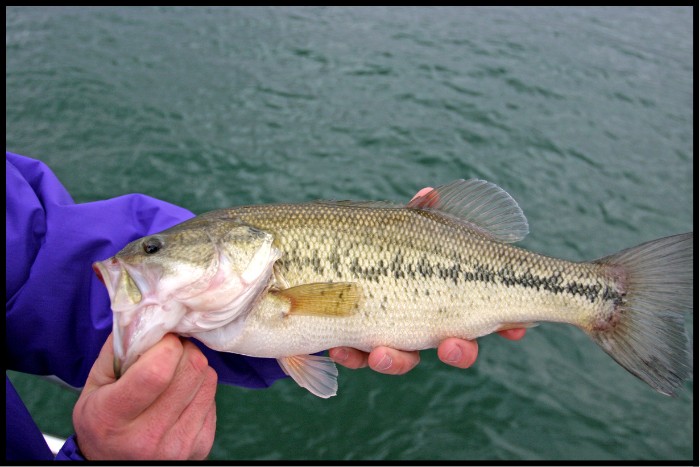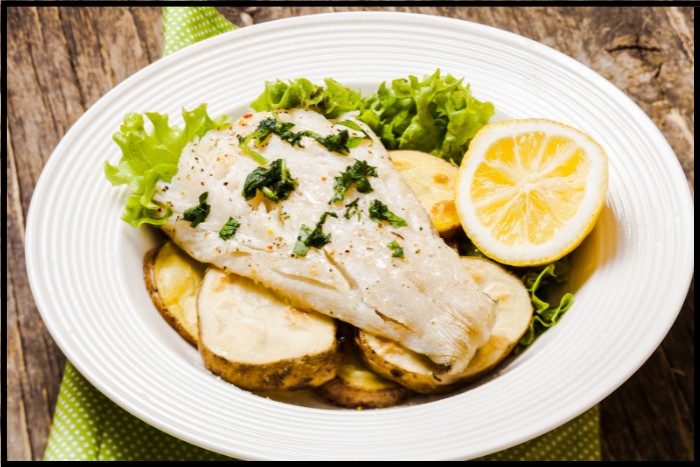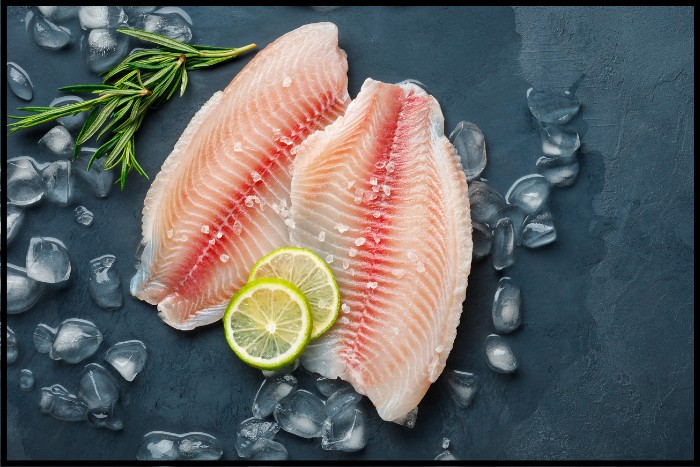Bass and trout might be two commonly targeted species across North America. However, they do not have much in common, especially when eating them. So you are probably wondering which is better to eat, bass or trout?
Trout is a better fish to eat when compared to bass because it mostly lives in clear water which means less meat toxicity. Further, it has a mild, sweet, earthy flavor rather than the ‘fishy’ bass texture and is a low-calorie, high-protein food source. Bass are also prone to holding on to mercury.
Continue reading for all the differences between eating trout and bass and what affects them. Understanding all the factors that impact trout and bass for food will help you choose the right one.
Major Factors That Impact Your Dietary Choice of Bass Or Trout
Both bass and trout are excellent species to serve at the dinner table. However, they have different flavors and unique factors impacting their quality.
Many people generally prefer trout over bass to eat, but this highly depends on personal preference and local environments.
Five considerations affect the quality and benefits of eating these fish when deciding which is better to eat between bass and trout.
Habitats, diets, flavors, cooking methods, and nutritional facts are the five things to consider. Below is a breakdown of each and how they differ between the two species.
1. Trout Habitat Impact On Quality
Trout are often either stocked or have natural spawning, which can change their habitat.
Ponds and small lakes might not be areas where trout are naturally found, but clean streams and larger lakes might have healthy trout populations.
However, both types of trout require cool, clean, and preferably flowing water to survive and thrive.
My article on rainbow trout habitat will give you some insight into the living environments of a lot of trout!
Since trout can’t survive well in dirty water, it’s easy to assume that trout you catch are low in toxic properties that can negatively impact their meat.
Flowing water also keeps trout active and lean, so you know that the meat of trout caught in streams will be muscular and with little fat in most cases.

2. Bass Habitat Impact On Quality
Bass, on the other hand, can live in a wider variety of conditions which can all negatively impact the quality of their meat.
Dirtier water, stressful conditions, and toxic chemicals might all be survivable for the fish but will negatively impact the meat.
Moreso than trout, knowing where your bass is from is vital to determining the quality of the fish.
The cleaner the water and the less stressful conditions, including temperature and fishing pressure, will result in better-tasting fish.
Bass in worse habitat conditions will have more “fishy” meat, smaller fillets, and other possible problems that will make them poor to eat.
Many people who have not enjoyed the bass they have tried in the past may have had fish from a bad pond or lake.
3. How Trout Diets Impact Them
Trout diets play a significant role in the quality of their meat just as much as any other factor, so it’s good to pay attention to their available food sources while fishing.
A diet high in insects will produce a different flavor than one high in other fish.
Trout that eat minnows, shiners, and other small fish primarily will have a firm and rich flavor in their fillets.
Trout that feed on insects and other small invertebrates will instead have a mild and delicate flavor, and their flesh will be a lighter color in comparison to those feeding on fish.
You’ll also want to ensure the trout have had a healthy amount of food, where they shouldn’t be skinny or excessively fat. A nice round belly on the fish is ideal, and plenty of meat on their sides for filets.
4. How Bass Diets Impact Them
Just like trout, the diet of bass will play a huge role in their flavor. Bass are very predatory fish and will eat anything that moves and fits in their mouth, including smaller fish, insects, and crustaceans.
For the best-tasting bass, you’ll want to catch them from areas with a healthy population of each of their food sources. Bass with a balanced diet of protein-rich food sources will have firm, tasty meat.
In areas with limited prey, bass might eat plants and algae, and these fish will have soft and flavorless meat compared to their counterparts.

5. Trout Fillet Flavor Profile
Trout has a delicate and mild flavor, not as “fishy” tasting as many other species, and is often slightly sweet, earthy, and gamey.
The meat will be mildly firm, not soft but still fork tender. The higher protein diet the fish has, the more pronounced that flavor will be, and the cleaner the environment, the better.
The diet of the trout and the species you are eating will have different flavors compared to similar fish.
The above description is very general, but you might find your local trout to be more firm or soft, and the flavors might be changed thanks to environmental factors.
6. Bass Fillet Flavor Profile
While trout might be a mild fish, bass is even more so. Trout has many oils that add to the flavor and give it a deeper flavor profile, while bass is incredibly mild and lacks a pronounced flavor.
Bass meat is also much more firm than trout, which lends itself to different cooking methods.
Thanks to the mild flavor of bass, it picks up other flavors well or can be given to people who are not huge fans of fish and want to try something less intimidating.
7. Best Methods To Cook Trout
Cooking is a matter of personal preference and can be done over a fire, grilled, baked, pan-fried, poached, and many more.
Ideally, any of these methods should be done in a way that traps the natural oils and flavors of the fish.
Butter, dill, lemon, and garlic are great accompaniments with trout that help bring out and enhance the flavor without overpowering it.
Since trout has such a strong and unique flavor, the best cooking methods are the ones that let this natural flavor shine.

8. Best Methods To Cook Bass
Any of the methods you can use with trout can also be used to cook bass, and thanks to the fish’s firm texture, it is easier to cook and try different cooking methods without risking breaking the filets.
With the more mild flavor of bass, it is even more important to use a variety of spices, herbs, and citrus to help flavor the meat.
Lime, cilantro, and taco seasoning is a great combination to make bass tacos, or any other flavors you enjoy will pair well with the mild bass flavor.
9. Trout Nutrition Facts
In an average trout filet weighing 79 grams, you’re looking at a low-calorie and high-protein food source.
With 110 calories, 4.9 grams of fat, 16 grams of protein, and 125% of the daily value of vitamin D, trout is a very healthy food source.
10. Bass Nutrition Facts
On average, a bass filet will be slightly larger than a trout filet, weighing in at 101 grams. This will provide 125 calories, 2.6 grams of fat, 24 grams of protein, and 79% of your recommended vitamin B12 allowance.
If you are looking for a higher protein option, bass is your best choice. However, both options offer great nutritional benefits.
One thing to look out for is local pollution levels, as bass is especially prone to holding on to mercury and may be recommended to eat once a week or less.

How To Pick Which One Is Right For You?
While it might seem easy for some to choose between bass and trout, many factors can impact the quality of the fish and change the flavor from one location to another.
By getting an idea about the fish’s environment and the type of fish, you’ll know whether or not your catch is good for eating.
Even if you think you might not like bass or trout you’ve tried before, trying one from a new location might surprise you.
